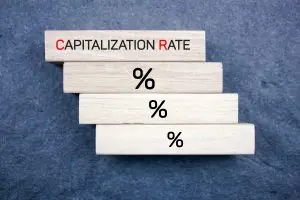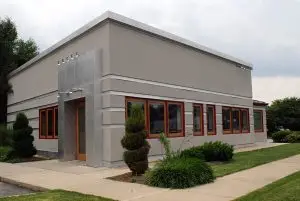Investing in real estate offers a variety of strategies, each with its advantages and challenges. Two popular approaches among small to medium-sized investors are the fix-and-flip and buy-and-hold strategies. Understanding the pros and cons of each approach can help you align your investment goals and risk tolerance with the most suitable strategy.

Fix-and-Flip: Quick Turnaround for Fast Profits
What Is It? Fix-and-flip involves purchasing properties, renovating or improving them, and selling quickly for a profit.
Advantages of a Fix-and-Flip Strategy.
- Potential for Rapid Profits. One of the most attractive aspects of fix-and-flip investing is the opportunity to realize quick returns. By purchasing undervalued or distressed properties, completing renovations efficiently, and selling within a short timeframe—often just a few months—you can generate significant profit in a relatively short period. This rapid turnaround enables investors to reinvest capital in new projects or diversify their portfolios more quickly.
- Cash Flow Flexibility. Since flips are usually completed within months, investors can cycle their capital swiftly. This flexibility can be particularly beneficial for those seeking to reinvest profits rather than tying up funds in the long term. It also enables investors to adjust their investment pace according to market conditions or personal financial goals.
- Market Timing Advantage. Fix-and-flip investors can capitalize on temporary market trends or rising neighborhoods by acquiring properties at a discount and selling them when market values increase. This strategic timing can maximize profits, especially in booming markets or during periods of economic growth.
- Opportunity to Add Value. Flippers often work on properties that need cosmetic or minor structural improvements, allowing them to add substantial value through renovations. This value-add approach can significantly enhance property value, resulting in a larger profit margin and increased appeal to future buyers.
- Skill Development and Industry Knowledge. Engaging in fix-and-flip projects helps investors develop a keen understanding of real estate valuation, construction management, and market dynamics. This experiential learning can be invaluable for expanding one’s investment expertise and making more informed decisions on future projects.
- Diversification of Investment Portfolio. By executing multiple flip projects, investors diversify their sources of income and reduce reliance on rental markets. This diversification can improve overall financial stability, especially if flips are scheduled to occur at different times or in other geographic areas.
- Less Long-Term Market Exposure. Unlike buy-and-hold investments, fix-and-flip projects are not subject to long-term market downturns or fluctuations. Since holdings are short-term, the investor’s exposure to sustained declines is limited, providing a form of risk mitigation.
Disadvantages of a Fix-and-Flip Strategy
- High Financial Risk. Fix-and-flip projects carry significant financial risks. Market fluctuations, unexpected renovation costs, or delays can reduce or eliminate profit margins. If property values decline during the renovation process or if the property doesn’t sell as planned, investors can face losses.
- Time-Intensive and Stressful. Flipping properties requires managing multiple tasks simultaneously, including finding the right property, overseeing renovations, ensuring quality control, and coordinating with contractors to ensure a seamless process. The process can be stressful and demanding, especially if issues arise unexpectedly.
- Upfront Capital Requirements. Successful flips often require substantial initial capital for property purchases, renovation costs, permits, and holding costs, such as property taxes and utilities, during the renovation period. Securing funding can be challenging, especially for new investors or those without access to substantial capital.
- Market Dependency and Timing Risks. The profitability of fix-and-flip investments is highly dependent on favorable market conditions. A downturn or slowdown in the housing market, particularly during or after renovations, can lead to difficulty selling the property at a profit or at all.
- Short-Term Investment and Limited Cash Flow. While potentially lucrative, flips are short-term investments that temporarily tie up capital. Once sold, the capital is freed up; however, during the holding period, there are no cash flow benefits, such as rental income, which may be less appealing to investors seeking ongoing income.
- Renovation Uncertainties and Cost Overruns. Renovation projects can encounter unforeseen issues, such as structural problems, code violations, or material shortages, which can lead to increased costs and delays. These surprises can erode profit margins or turn a profitable flip into a loss.
- Market Saturation and Competition. In popular or hot markets, increased competition among flippers can drive up property prices, narrow profit margins, and make deals more difficult to find. Additionally, high demand can push up renovation costs due to labor and material shortages.
- Capital Gains Tax Implications. Since fix-and-flip profits are typically considered short-term capital gains, they may be taxed at higher rates than long-term investments. This can eat into overall profitability unless tax planning strategies are in place.
Buy-and-Hold: Building Long-Term Wealth
What Is It? Buy-and-hold involves purchasing properties to rent out and hold for appreciation, generating steady income over time.

Advantages of a Buy-and-Hold Strategy
- Steady Income Generation. One of the primary benefits of buy-and-hold investing is the ability to generate consistent cash flow through rental income. This steady stream of income can help cover mortgage payments, property maintenance, and other expenses, providing financial stability and ongoing revenue.
- Long-Term Wealth Building. Buy-and-hold properties appreciate over time, potentially increasing your net worth as property values rise. This strategy allows investors to build equity gradually, which can be leveraged for future investments or to fund retirement.
- Tax Advantages. Rental property investors benefit from various tax deductions, including mortgage interest, property taxes, repairs, depreciation, and operating expenses. These deductions can significantly reduce taxable income, boosting overall profitability.
- Portfolio Diversification and Risk Mitigation. Owning multiple rental properties across different locations or property types spreads risk. If one property underperforms or faces vacancies, others in the portfolio can help offset losses, creating a more resilient investment portfolio.
- Inflation Hedge. Real estate often acts as a hedge against inflation. As inflation rises, property values and rental incomes tend to increase, helping preserve purchasing power over time.
- Minimal Active Management Compared to Flipping. While being a landlord involves responsibilities such as tenant management and maintenance, buy-and-hold investors often adopt a more hands-off approach compared to the intensive renovation process of flipping. This can be appealing to those seeking a more passive income stream.
- Potential for Strategic Improvements. Long-term investors can enhance property value through strategic improvements or better management, increasing rental income and property value over time.
- Capital Preservation. Holding properties long-term minimizes the risks associated with short-term market fluctuations. Over extended periods, property markets tend to trend upward, offering a degree of stability and capital preservation.
Disadvantages of a Buy-and-Hold Strategy
- Slow Growth and Longer Horizon. Unlike fix-and-flip investments, buy-and-hold properties typically appreciate gradually over the course of many years. This slow pace of wealth accumulation may not align with investors seeking rapid profits or those needing liquidity in the short term.
- Management and Maintenance Responsibilities. Being a landlord involves ongoing responsibilities, including collecting rent, handling repairs, addressing tenant issues, and ensuring compliance with housing regulations. These tasks can be time-consuming and sometimes stressful, especially if properties are located far from the investor’s primary residence.
- Vacancy Risks. Rental properties are subject to periods of vacancy, during which no rental income is generated. Extended vacancies can strain cash flow, primarily if the investor relies heavily on rental income to cover mortgage payments and expenses.
- Market and Economic Risks. While real estate generally appreciates over the long term, market downturns or economic recessions can temporarily or permanently reduce property values. Rental demand can also decline in economic downturns, affecting income stability.
- Upfront Capital and Liquidity Constraints. Buying and maintaining rental properties requires significant initial capital for down payments, closing costs, and ongoing expenses. Moreover, real estate is relatively illiquid compared to stocks or bonds, making it challenging to access cash quickly if needed.
- Rising Operating Costs. Over time, costs such as property taxes, insurance, maintenance, and property management fees tend to increase. These rising expenses may reduce net rental income unless rental rates are adjusted accordingly.
- Complexity of Landlord Laws and Regulations. Navigating local landlord-tenant laws, fair housing regulations, and legal requirements can be complex and vary from jurisdiction to jurisdiction. Non-compliance can result in legal issues, fines, or loss of rental income. Please check out our course on Rent Caps, Just Cause Evictions, and Security Deposits.
- Potential for Depreciation and Obsolescence. Older properties often require regular updates and repairs to remain competitive. Technological and design standards evolve, making some properties less attractive over time, which can impact rental income and appreciation potential.
Which Strategy Is Right for You?
Choosing between fix-and-flip and buy-and-hold depends on your financial goals, risk appetite, and experience. If you seek quick profits and are comfortable managing renovation projects, fix-and-flip may suit you. If you prefer a steady income and long-term wealth building, a buy-and-hold strategy may be a better option.
Final Thoughts
Both strategies can be profitable if executed correctly, but they demand different skill sets and risk management approaches. Many successful investors incorporate both strategies into their portfolio, balancing short-term flips with long-term rentals. If you’re starting, consider your investment horizon, available capital, and experience level before selecting a strategy. Whatever you decide, diligent analysis and a thorough understanding of the market are key to maximizing your investment success. Please consider taking our course How To Invest In Real Estate For Your Future. That course offers an examination of various topics related to investing in real estate for your future.






